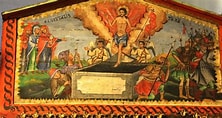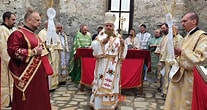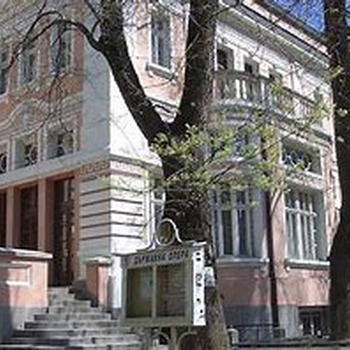Holy Trinity Church
Overview
The construction of the Holy Trinity Church took place under dramatic circumstances.
According to the preserved written information, it was built by the residents of the northwestern outskirts of Stara Zagora - the neighborhood "Gebran". The population there is Bulgarian, among them people of other nationalities and with different faiths do not live. The neighborhood is mainly engaged in agriculture, away from the city center and the bustling commercial, craft and cultural life. They are worshiped in the oldest church in Stara Zagora - "St. Dimitar". Over time, however, the neighborhood grew to the west and the church of St. Demetrius became more and more remote. In addition, the road to church buildings passes through Turkish neighborhoods, where worshipers are often harassed and humiliated. That is why the Christians in the neighborhood decided to build their own temple.
Information about the construction of the temple is left to us by some contemporaries. Hadji Gospodin Slavov in his "Chronological description of the most important and remarkable events in the city of Stara Zagora in church, school and national relations in the XIX century" reported that in 1861, after the exile of the Bulgarian bishops, municipalities across the country broadcast their representatives to defend their interests. As a representative of the Stara Zagora church-school community, on May 20, 1861, Hadji Gospodin Slavov found himself in Constantinople, where he issued a decree legalizing the construction of a new church.
By this time, residents of the city's three western neighborhoods, Gibran, Ebni Aivaz and Junet, had already bought a vacant space for construction. It was located a kilometer from the mansions of the then influential Hadji Bey. When construction began, his son, Sadak Bey, then 20-25 years old, gathered an armed mob of Turks and they beat the masons and destroyed the foundations of the temple.
The historian Georgi Dimitrov in his work "Principality of Bulgaria" specifies that after the refusal of the local authorities to resolve the dispute, the Bulgarians from the mentioned western neighborhoods sent P. Chasovnikarov, St. Mitev and P. Chakarov in Plovdiv; Boncho Markov and x. Zhelyazko Stoynov - in Sliven, and Leko Nikolov - in Edirne to complain. The action leads to the desired result - it is ordered to ensure the implementation of the firman. For this purpose, Mehmed Pasha from Edirne telegraphed to the Plovdiv mutesarif to send a camp of soldiers with two cannons, while ordering the Sliven mutesarif Nuserat Pasha to go to Stara Zagora.
Hadji Gospodin Slavov tells in pathetic details what investigation Nuserat Pasha is conducting, how he detains and punishes some of the perpetrators, what is the effect of his speech in the Turkish konak. This speech excited the Muslims so much that some of them went to the place and began to collect the scattered building materials. The public ostentation in restoring the rights of the Bulgarians to build the church left a strong impression on the contemporaries.
The rapid intervention of the authorities restored for some time religious tolerance and civic balance, and this allowed the temple to be completed in early 1864. This fact gave Hadji Gospodin Slavov reason to assume that the temple was built in 1864.
Recommended
- Ancient Roman Forum Complex
- Hall of Laughter
- Zoo
- Bedechka Park
- Neolithic dwellings Museum
- Archaeological complex "Museum of Religions"


 Bulgarian
Bulgarian Romanian
Romanian





